Category Archives: Invertebrates
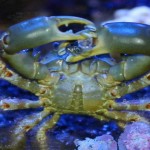
Emerald Crab
Common Name: Emerald Crab
Scientific Name: Mithraculus Sculptus
Reef Safe: Yes
Temperament: Semi Agressive
Care Level: Very Easy
Max Size: Around 2 inches
Appearance:
Emerald crabs are very good little scavengers and members of almost any clean-up crew. They will remain fairly small (around 2 inches) and will be varying shades of green.
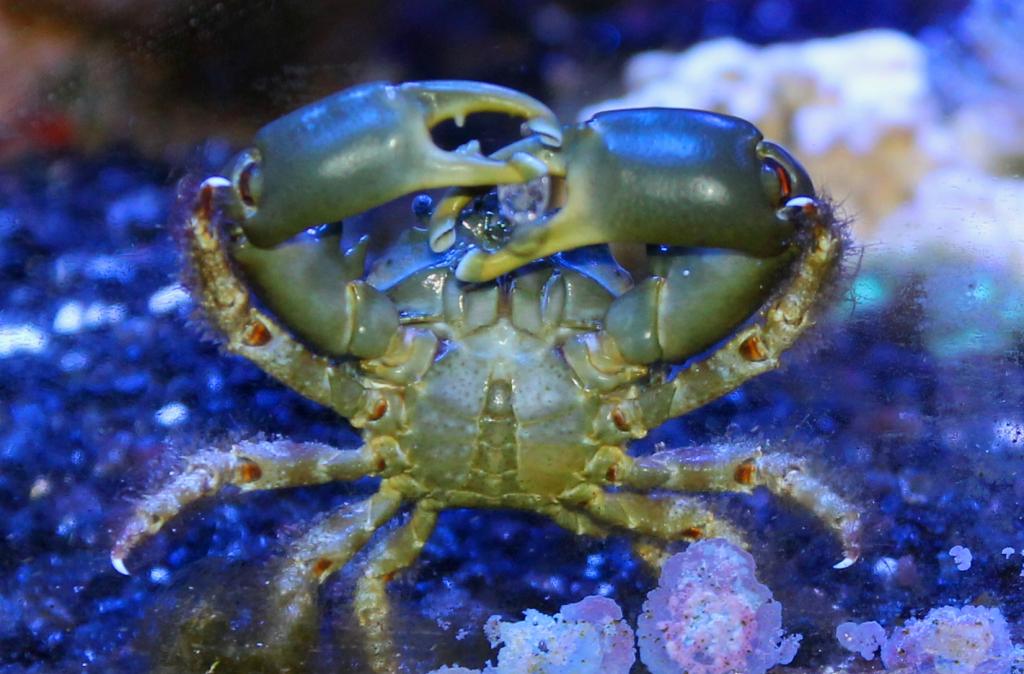
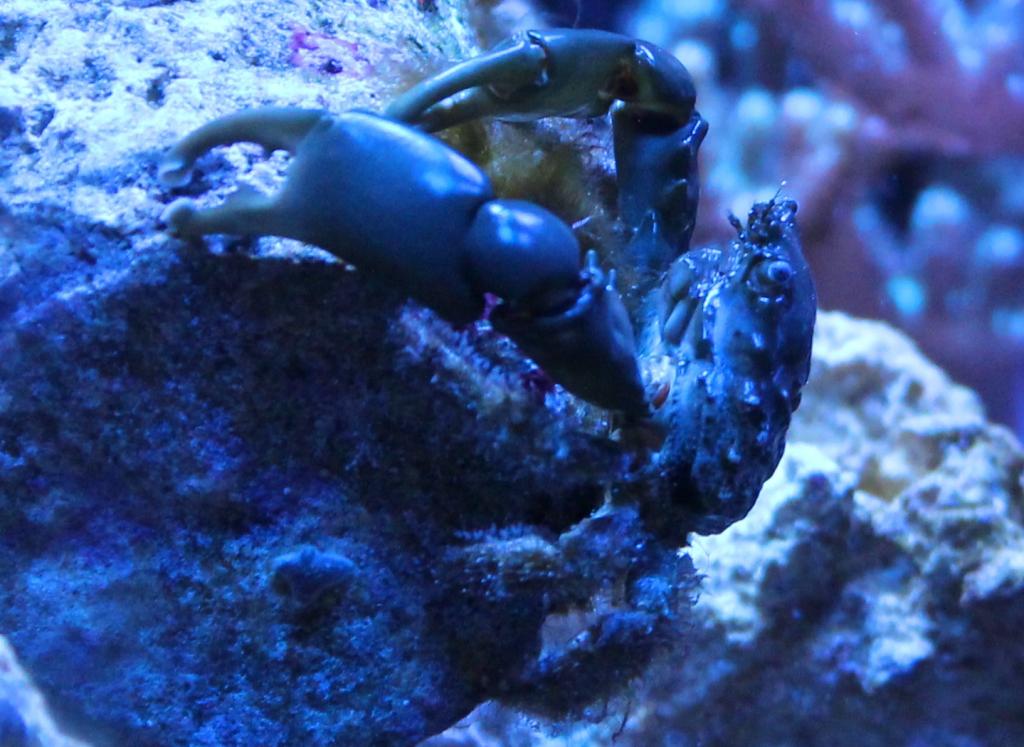
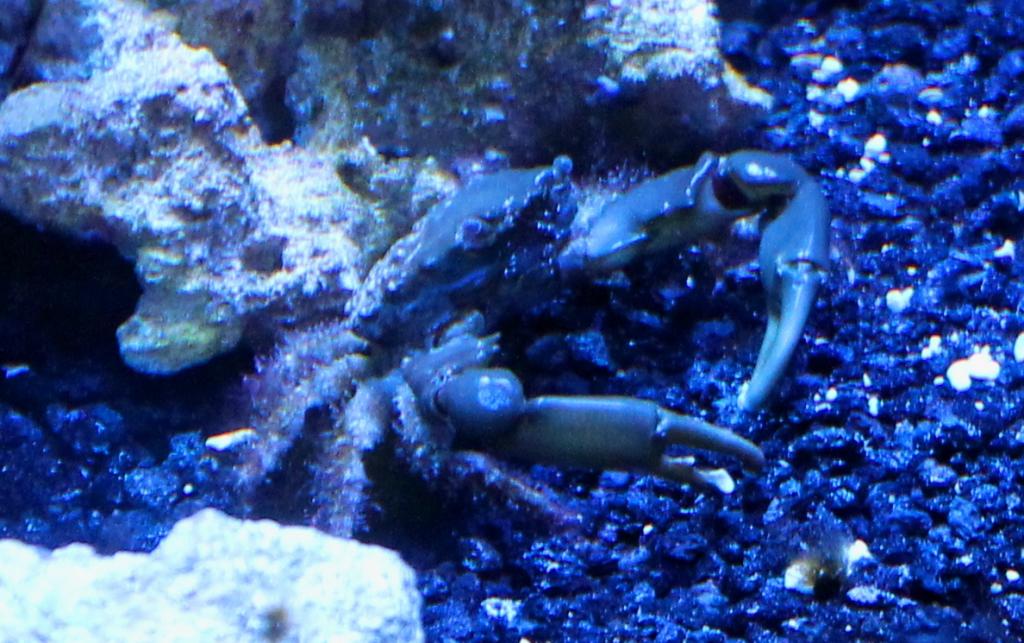
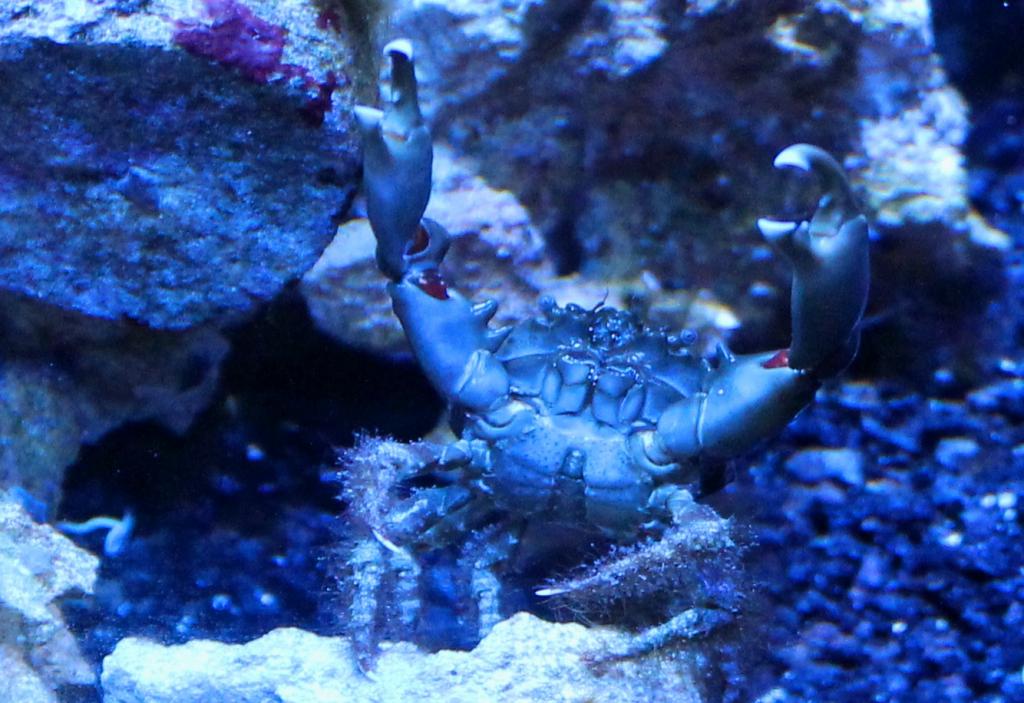
Temperament
As with most crabs, emerald crabs are very opportunistic feedings that have also been known to try to steel food and will aggressively try to get. They have been known to stress corals by trying to steel food from them. Emerald crabs have also been known to claim a small area in the aquarium as their own and will try to chase away other emerald crabs from their spot.
Environment
Emerald crabs do best in aquariums with a lot of live rock. They prefer to hide in the live rock when the tank lights are on and come out to feed when the tank lights are off. Once they have settled into their new aquarium home, they will occasionally venture out into the open with the tank lights on in search of food. They will best in mature set-up or new set-ups with green algae for them to eat. Provided there is enough algae and food to sustain them, the emerald crab is suitable for aquariums as small as 20 gallons.
Recommended water conditions:
I would refer you to the below article for the typical water conditions that an emerald crab will do best in. While emerald crabs are very tolerant to less than ideal water parameters, the will best in the long term with good and stable water parameters.
https://www.reefaquarium.com/2013/the-basics-of-marine-aquarium-water-parameters/
Diet
As Emerald crabs are omnivores, they will do best in an aquarium with green algae for them to eat as well as some meaty foods. Emerald crab will eat a lot of algae growing in your aquarium as the biggest part of their diet. If the algae level drop to the point of there not being enough in the aquarium for the emerald crab to eat, you can supplement their diet with dried seaweed and some additional meaty foods.
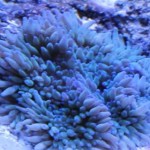
Sebae Anemone
Common Name: Sebae Anemone, Leather Anemone
Scientific Name: Heteractis Crispa
Reef Safe: Yes
Flow: Moderate
Lighting: High
Care Level: Moderate to Difficult
Max Size: Around 30 inches
Appearance:
The sebae anemone has longer tentacles (1.5 to 2.5 inches in length) which is very similar in length to a bubble tip anemone. The tentacle will typically be a brown(ish) color with the tips having a blue to blue/green coloring to them. The below pictures are of my sebae anemone.
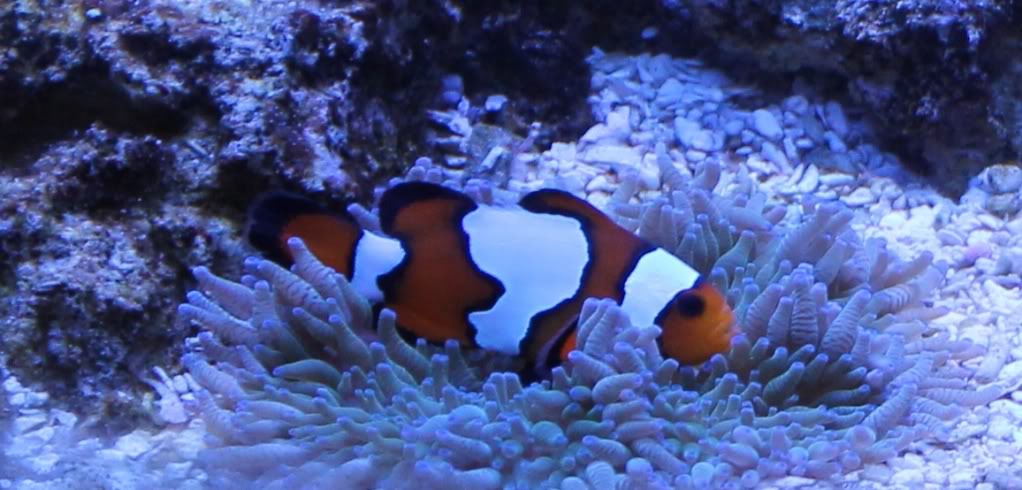
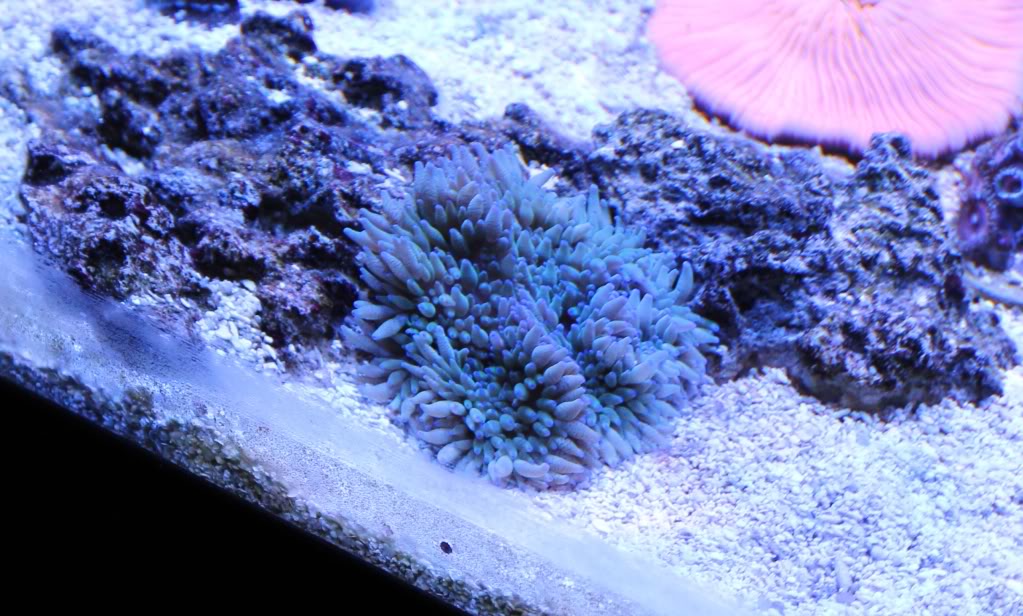
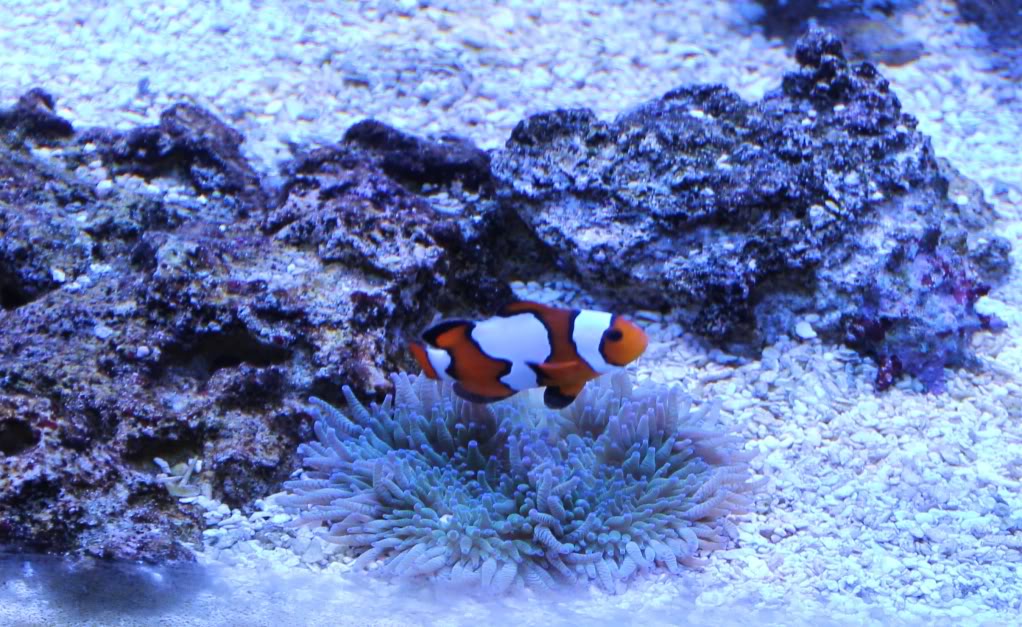
Temperament
A sebae anemone has been known to eat smaller fish and invertebrates on occasion. While the sebae anemone has been known to move, it typically will not do that unless there is something wrong with the water parameters. For that reason, extreme care should be taken when keeping a sebae anemone in an aquarium with other anemones
Environment
The sebae anemone can get to be a little over 30 inches across which is why I would suggest a tank size of no less than 40 gallons for these anemones (forty gallon breeder is a better minimum tank size). However, a larger tank would make it a lot easier for you to maintain stable water parameters, which is something the sebae anemone truly needs. As with all anemones, they need to be placed in a stable and matured aquarium. I would only recommend then to hobbyists who are at least somewhat experienced
Sebae anemones are not among the more common anemones available in the hobby these days. In my experience, sebae anemones typically like to attach it’s boot in rocky and sandy spots. They like moderate flow and high lighting conditions.
Recommended water conditions:
I would refer you to the below article for the typical water conditions that a sebae anemones will do best in. As a more difficult invertebrate to keep, the sebae anemone will also need both good and very stable water parameters for long term success.
https://www.reefaquarium.com/2013/the-basics-of-marine-aquarium-water-parameters/
Diet
While sebae anemones can thrive under the correct level of lighting (providing all other requirements are met) they can still benefit from the occasional (or weekly) feeding made up of some meeting foods. You must be careful to offer only high quality foods as anemones (in general) can suffer from bacterial infections when offered poor quality foods. The below link can help you with that as well.
https://www.reefaquarium.com/2012/feeding-high-quality-froozen-foods/
Reproduction
It is not very common for the sebae anemone to reproduce in a home aquarium, even when kept in ideal conditions.
Fragging
In my opinion, you should not frag anemones as they are invertebrates and not corals. Although you can find information on line posted by people who claim to have successfully fragged anemones, I would encourage you to read through the below link before considering to attempt fragging an anemone.
http://www.wifeofnerd.com/images/Embryonic%20development%20of%20E.%20quad%20H.%20crisp.pdf
http://www.wifeofnerd.com/images/Broadcast%20spawning%20of%20E.%20quad%20H.%20crisp.pdf
A Word of Caution
Handle this invertebrate, and all Anemones, with care. They have the ability to sting with their tentacles. These stings can cause skin irritations or serious allergic reactions. Always wear protective rubber gloves when handling anemones
The sebae anemone can also have very sticky tentacles as compared to a lot other anemones. This can make it a very aggressive eater as it will not let go if a fish (or your hand) were to come in contact with the tentacles. I would almost be willing to classify these guys as aggressive eaters/predators if it wasn’t not for the fact they typically don’t move.
Clownfish
If you would like clown fish, consider the below list of some the more common clown fish that have been known to readily host in sebae anemones.
Amphiprion Clarkii
Amphiprion Ocellaris, ocellaris clown fish (all color variations)
Amphiprion Bicinctus, or two-band clown
Amphiprion Frenatus, or tomato clown
Amphiprion. Melanopus, or cinnamon clown
For some more detailed information about anemones in general, I would refer you to the below link
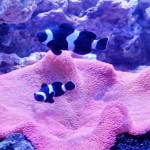
Haddoni Carpet Anemone
Common Name: Carpet Anemone, Haddoni Carpet Anemone
Scientific Name: Stichodactyla Haddoni
Reef Safe: Yes
Flow: Low to Moderate
Lighting: High
Care Level: Difficult
Max Size: Around 34 to 36 inches
Appearance:
The haddoni carpet anemone has very short and tightly packed tentacles. The haddoni carpet anemone’s tentacles look more like colored bumps rather than tentacles. I like to think of it as looking like commercial grade carpeting. Their tentacles are around ¼ to ½ inches in length which is a little smaller than the tentacles of a Gigantea anemone. Typically they will be a brown or sandy color but can have other less common colors like: green, blue, and purple. More rare colors are red and pink.
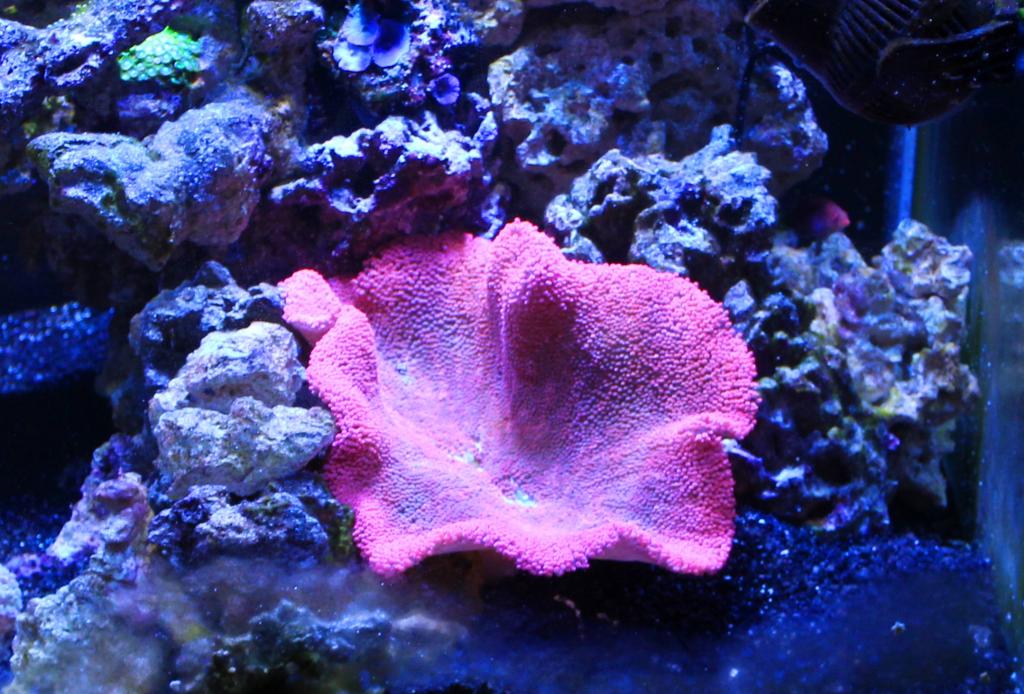
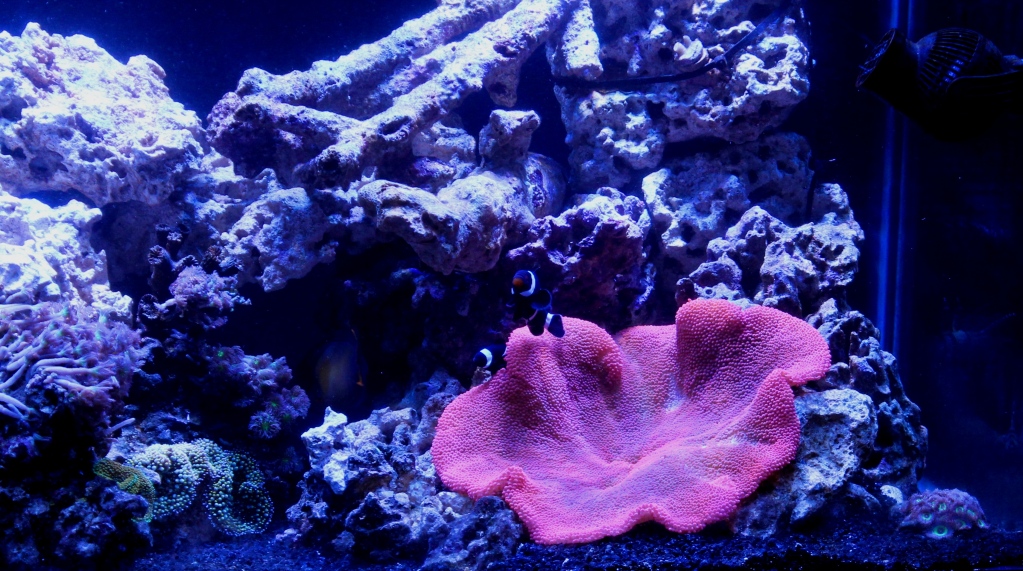
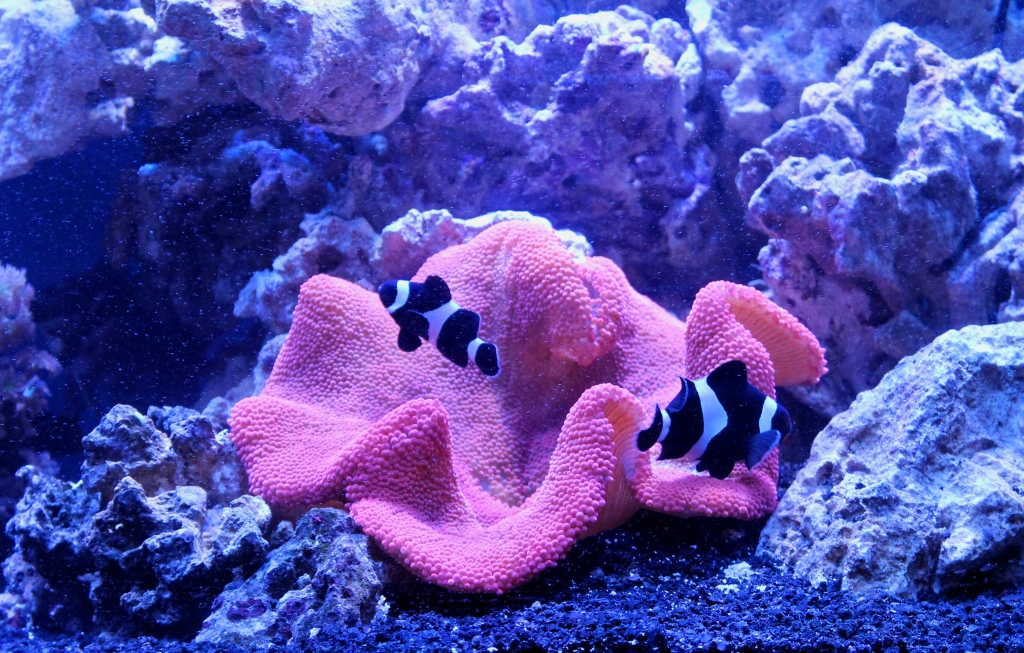
Temperament
A haddoni anemone has been known to eat varied sizes of fish and invertebrates making them one of the more aggressive eaters when compared to other anemones. For that reason, extreme care should be taken when keeping a haddoni anemone in an aquarium with other anemones. While the haddoni anemone has not been known to move, you should not have to worry about that unless there is something wrong with the water parameters. In general, carpet anemones are the least likely to move when provided a good and stable environment that meets their needs.
Environment
The haddoni anemone can get to be a little over 34 inches across which is why I would suggest a tank size of no less than 75 gallons for these anemones. However, a larger tank would make it a lot easier for you to maintain stable water parameters which is something the haddoni anemone truly needs. Haddoni anemones are very demanding and require very good and very stable conditions.
Haddoni anemones are among the more common carpet anemones available in the hobby these days. In my experience, haddoni anemones typically like to attach sink their boot into the substrate and attach their boot to the bottom pane of glass. For this reason they will need a spot on the bottom of you tank with about 4 inches of sandy substrate. They like moderate flow and high lighting conditions.
As with all anemones, they need to be placed in a very stable and matured aquarium. I would only recommend then to hobbyists who are at least somewhat experienced.
Recommended water conditions:
I would refer you to the below article for the typical water conditions that a haddoni anemone will do best in. As a very difficult invertebrate to keep, the haddoni carpet anemone will also need both very good (near perfect) and very stable water parameters for long term success.
https://www.reefaquarium.com/2013/the-basics-of-marine-aquarium-water-parameters/
Diet
While haddoni anemones can thrive under the correct level of lighting (providing all other requirements are met) they can still benefit from the occasional (or weekly) feeding made up of some meeting foods. You must be careful to offer only high quality foods as anemones (in general) can suffer from bacterial infections when offered poor quality foods. The below link can help you with that as well.
https://www.reefaquarium.com/2012/feeding-high-quality-froozen-foods/
Reproduction
It is not very common for carpet anemones to reproduce in a home aquarium, even when kept in ideal conditions. .
Fragging
In my opinion, you should not frag anemones as they are invertebrates and not corals. Although you can find information on line posted by people who claim to have successfully fragged anemones, I would encourage you to read through the below link before considering to attempt fragging an anemone.
http://www.wifeofnerd.com/images/Embryonic%20development%20of%20E.%20quad%20H.%20crisp.pdf
http://www.wifeofnerd.com/images/Broadcast%20spawning%20of%20E.%20quad%20H.%20crisp.pdf
A Word of Caution
Handle this invertebrate, and all Anemones, with care. They have the ability to sting with their tentacles. These stings can cause skin irritations or serious allergic reactions. Always wear protective rubber gloves when handling anemones
The haddoni anemone has very sticky tentacles as compared to a lot other anemones. They are just about the stickiest of all the anemones in the hobby today. Haddonis can be a very aggressive eater as it will not let go if a fish (or your hand) when/if it came in contact with the tentacles. I would almost be willing to classify these guys as aggressive eaters/predators if it wasn’t not for the fact they typically don’t move.
Clownfish
If you would like clown fish, consider the below list of some the more common clown fish that have been known to readily host in haddoni anemones.
Amphiprion ocellaris, or ocellaris clown fish (all color variations)
Amphiprion clarkia, or clarkie clown fish
Amphiprion sebae, or just sabae clown
Amphiprion Frenatus, or tomato clown
For some more detailed information about anemones in general, I would refer you to the below link
https://www.reefaquarium.com/2012/keeping-anemones/
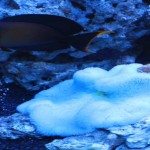
Gigantea Carpet Anemone
Common Name: Carpet Anemone, Gigantea Carpet Anemone
Scientific Name: Stichodactyla Gigantea
Reef Safe: Yes
Flow: Low to Moderate
Lighting: High
Care Level: Difficult
Max Size: Around 34 to 36 inches
Appearance:
The gigantean carpet anemone typically will get over 2 feet in diameter, and will frequently get to around 3 feet when kept in ideal conditions. In the wild they can get to well over 3 feet. Their tentacles are the longest of the carpet anemones but much shorter than a long tentacle or bubble tip anemone. The tentacles will be around ¼ to ¾ inches in length. I like to think of it as looking like 1960′s shag carpeting. Typically they will be a brown or sandy color but other less common colors like green, blue, yellow, purple, and pink can also be found. Even harder to find colors include red and a dark blue.
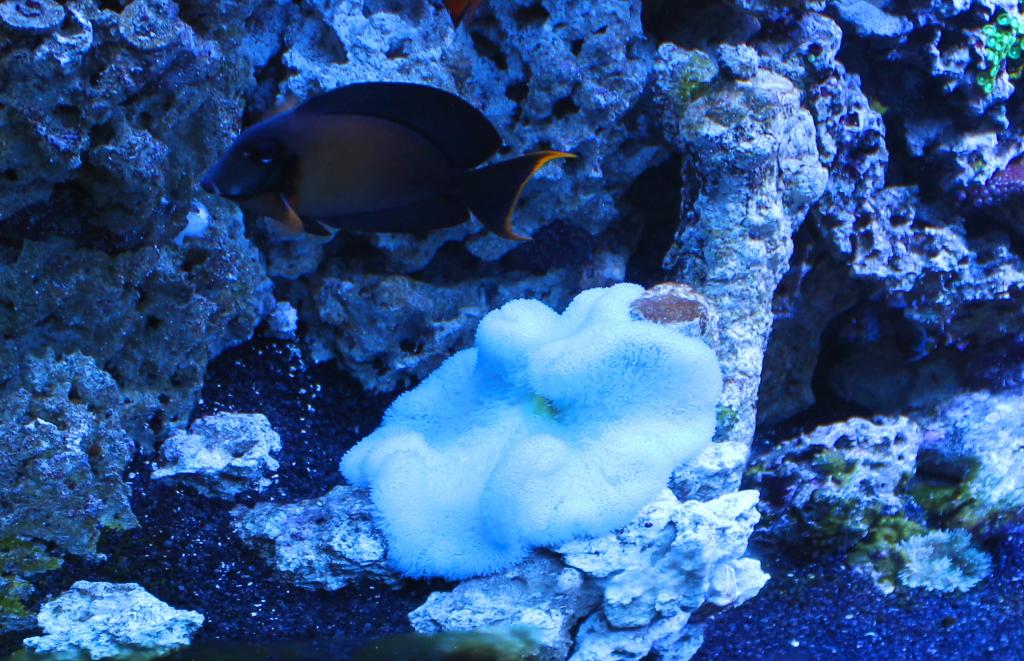
Temperament
A gigantea carpet anemone has been known to eat varied sizes of fish and invertebrates making them one of the more aggressive eaters when compared to other anemones. For that reason, extreme care should be taken when keeping a gigantea carpet anemone in an aquarium with other anemones. While the gigantea carpet anemone has not been known to move, you should not have to worry about that unless there is something wrong with the water parameters. In general, carpet anemones are the least likely to move.
Environment
The gigantea anemone can get to be a little over 34 inches across which is why I would suggest a tank size of no less than 75 gallons for these anemones. However, a larger tank would make it a lot easier for you to maintain stable water parameter which is something the gigantean carpet anemone truly needs. Gigantea carpet anemones are very demanding and require very good and very stable conditions.
Gigantea carpet anemones are among the more common carpet anemones available in the hobby these days. In my experience, gigantea carpet anemones typically like to sink their boot in the substrate and attaching their boot to the bottom pane of glass. For this reason, you would need to place their boot in about 4 inches of sandy substrate. They like moderate flow and high lighting conditions.
As with all anemones, they need to be placed in a stable and matured aquarium. I would only recommend then to hobbyists who are at least somewhat experienced.
Recommended water conditions:
I would refer you to the below article for the typical water conditions that a gigantea anemone will do best in. As a very difficult invertebrate to keep, the gigantea carpet anemone will also need both good and stable water parameters for long term success.
https://www.reefaquarium.com/2013/the-basics-of-marine-aquarium-water-parameters/
Diet
While gigantea anemones can thrive under the correct level of lighting (providing all other requirements are met) they can still benefit from the occasional (or weekly) feeding made up of some meeting foods. You must be careful to offer only high quality foods as anemones (in general) can suffer from bacterial infections when offered poor quality foods. The below link can help you with that as well.
https://www.reefaquarium.com/2012/feeding-high-quality-froozen-foods/
Reproduction
It is not very common for carpet anemones to reproduce in a home aquarium, even when kept in ideal conditions. .
Fragging
In my opinion, you should not frag anemones as they are invertebrates and not corals. Although you can find information on line posted by people who claim to have successfully fragged anemones, I would encourage you to read through the below link before considering to attempt fragging an anemone.
http://www.wifeofnerd.com/images/Embryonic%20development%20of%20E.%20quad%20H.%20crisp.pdf
http://www.wifeofnerd.com/images/Broadcast%20spawning%20of%20E.%20quad%20H.%20crisp.pdf
A Word of Caution
Handle this invertebrate, and all Anemones, with care. They have the ability to sting with their tentacles. These stings can cause skin irritations or serious allergic reactions. Always wear protective rubber gloves when handling anemones
The gigantea anemone has very sticky tentacles as compared to a lot other anemones. They are just about the most sticky of all the anemones in the hobby today. Gigantea anemones can be a very aggressive eater as it will not let go if a fish (or your hand) when/if it came in contact with the tentacles. I would almost be willing to classify these guys as aggressive eaters/predators if it wasn’t not for the fact they typically don’t move.
Clownfish
If you would like clown fish, consider the below list of some the more common clown fish that have been known to readily host in giganteaanemones.
Amphiprion ocellaris, or ocellaris clown fish (all color variations)
Amphiprion clarkia, or clarkie clown fish
Amphiprion sebae, or just sabae clown
Amphiprion Frenatus, or tomato clown
For some more detailed information about anemones in general, I would refer you to the below link
https://www.reefaquarium.com/2012/keeping-anemones/
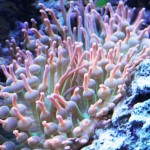
Bubble Tip Anemone
Common Name: Bubble Tip Anemone, BTA, Rose Bubble Tip Anemone, RBTA
Scientific Name: Entacmaea Quadricolor
Reef Safe: Yes
Flow: Moderate
Lighting: High
Care Level: Moderate
Max Size: 20 to 24 inches
Appearance:
The bubble tip anemone is among the most common anemones kept in the hobby as they are among the easier to keep anemones. The most common is the red or green bubble tip, however you can get color variations with hints of blue to orange colors as well. They can be easily identified by the longer tentacles (1 to 2 inches in length) with a “bubble” structure near the end of the tentacle. The size and shape of the bubble structure on the end of the tentacle will vary between different BTAs from very large to almost nonexistent. The below pictures are of a few bubble tip anemones that I have kept.
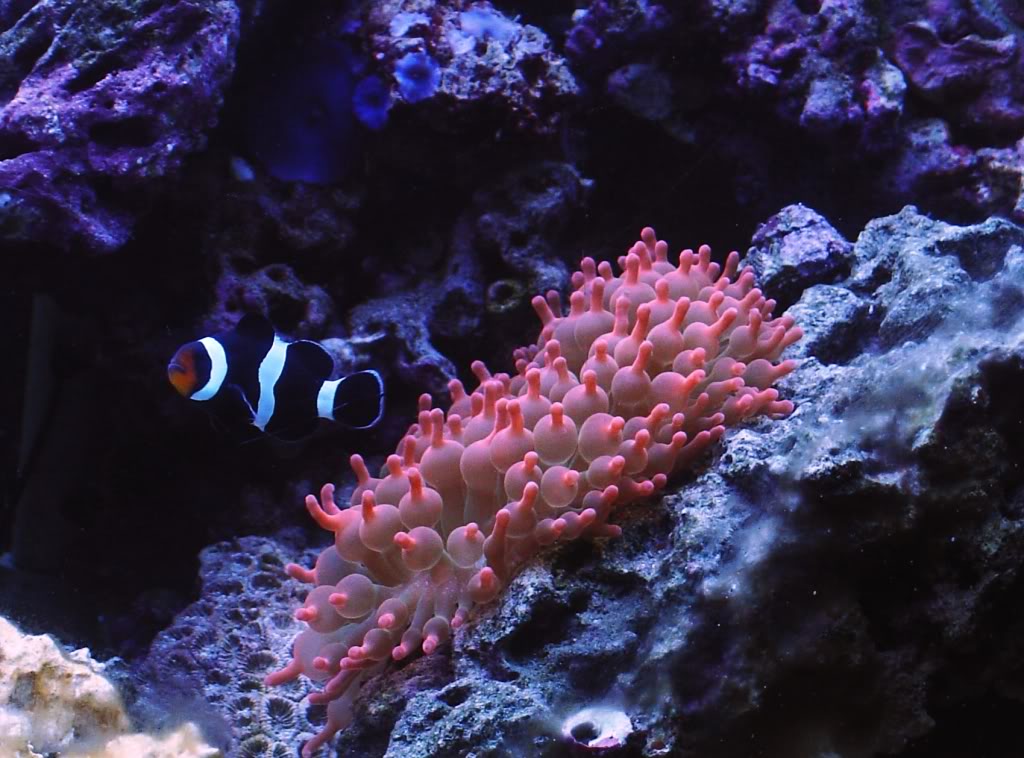
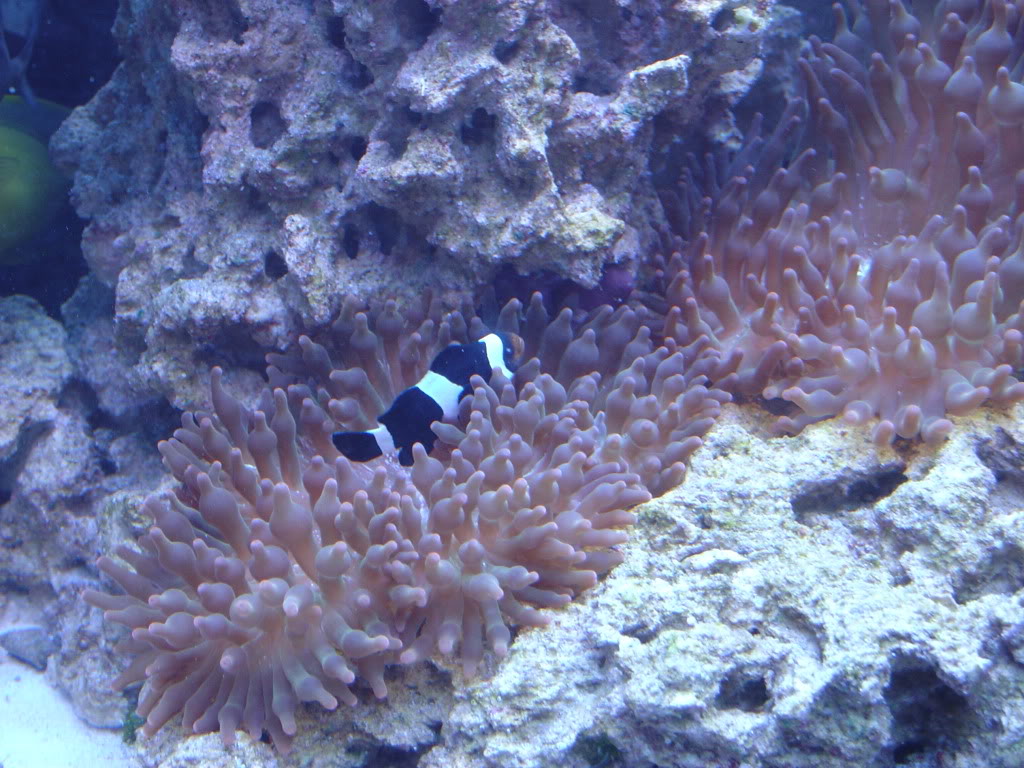
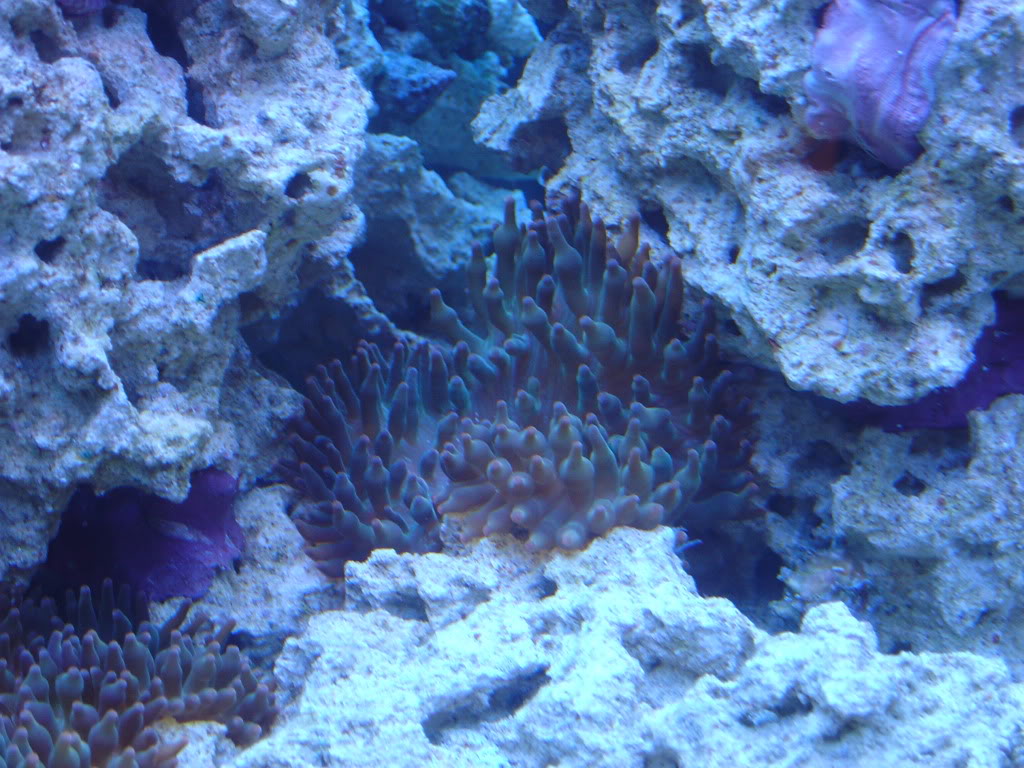
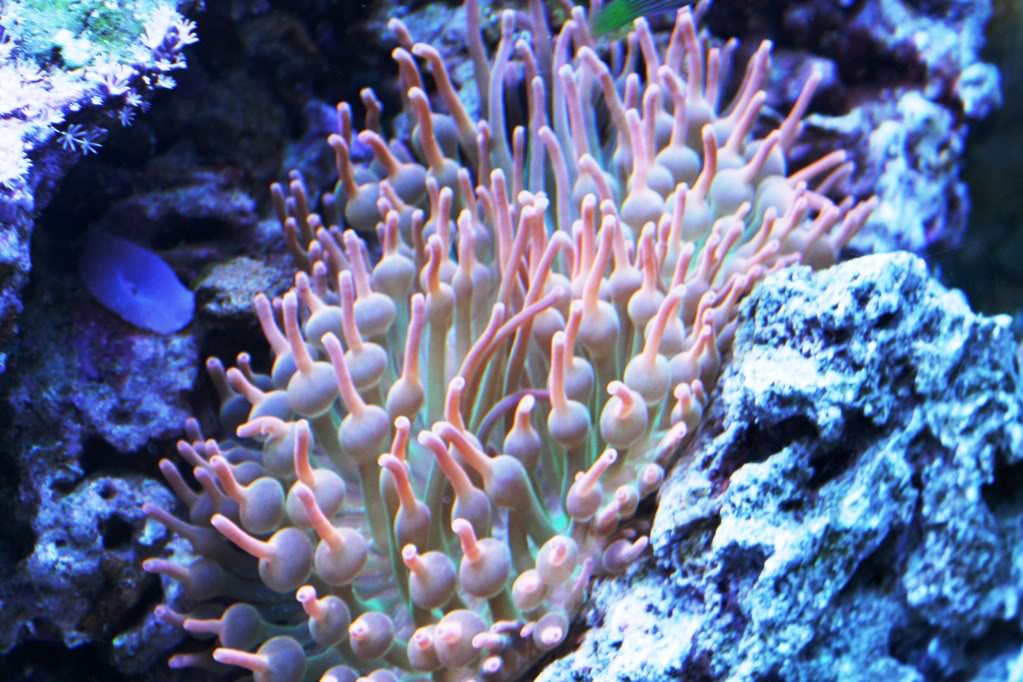
Temperament
When compared to other anemones, the bubble tip anemone would be the least likely to eat any of your fish or invertebrates. By anemone standards, that makes the bubble tip anemone one of the more peaceful anemones. However, the bubble tip anemone is the most likely to move around in your aquarium should it become unhappy with something in its environment or a very slight change in its environment. This will create problems as the anemone can sting corals as it moves damaging or killing the corals it stings.
Environment
These anemones can get to be a little over one foot across which is why I would suggest a tank size of no less than 30 gallons for bubble tip anemones. In my experience, they are among the easier anemones to keep and likely the hardiest of the anemones. Bubble tip anemones typically like to attach to the rocks in a spot where they can attach their boot into a crevasse in the rock and protect their boot. They like moderate flow and high lighting conditions.
As with all anemones, they need to be placed in a stable and matured aquarium. I would only recommend then to hobbyists who are at least somewhat experienced. In addition, extreme care should be taken if you are going to keep a bubble tip anemone in an aquarium with a different type of anemone.
Recommended Water Conditions:
I would refer you to the below article for the typical water conditions that a bubble tip anemone will do best in. As a more difficult invertebrate to keep, the bubble tip anemone will also need both good and very stable water parameters for long term success.
https://www.reefaquarium.com/2013/the-basics-of-marine-aquarium-water-parameters/
Diet
While bubble tip anemones can thrive under the correct level of lighting (providing all other requirements are met) they can still benefit from the occasional (weekly) feeding of some meeting foods. If you see a bubble tip anemone with its tentacles stretched out, they are using them like sweeper tentacles when hungry. This is the anemone’s method of capturing food in the wild. After grabbing a meal, the tentacles will shorten again and the bubble tips return. You must be careful to offer only high quality foods as anemones (in general) can suffer from bacterial infections when offered poor quality foods. The below link can help you with that as well.
https://www.reefaquarium.com/2012/feeding-high-quality-froozen-foods/
Reproduction
It is also very common for bubble tip anemones to reproduce in the home aquarium when kept in ideal conditions. They can produce sexually by spawning, or much more commonly asexually by splitting. I had started off with one bubble tip anemone in one of my tanks which ended up as 5 bubble tip anemones one year later. It seemed like once the anemone would get to close its maximum size, it would split and one half would move around the tank until it found a spot it liked.
Fragging
In my opinion, you should not frag anemones as they are invertebrates and not corals. Although you can find information on line posted by people who claim to have successfully fragged anemones, I would encourage you to read through the below links before considering to attempt fragging an anemone.
http://www.wifeofnerd.com/images/Embryonic%20development%20of%20E.%20quad%20H.%20crisp.pdf
http://www.wifeofnerd.com/images/Broadcast%20spawning%20of%20E.%20quad%20H.%20crisp.pdf
A Word of Caution
Handle this invertebrate, and all anemones, with care. They have the ability to sting with their tentacles. These stings can cause skin irritations or serious allergic reactions. Always wear protective rubber gloves when handling anemones
Clownfish
If you would like clown fish, consider the below list of some the more common clown fish that have been known to readily host in bubble tip anemones.
Amphiprion Clarkii
Amphiprion Ocellaris, ocellaris clown fish (all color variations)
Amphiprion Bicinctus, or two-band clown
Amphiprion Frenatus, or tomato clown
Amphiprion. Melanopus, or cinnamon clown
For some more detailed information, I would refer you to the below link
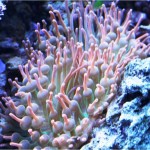
Keeping Anemones
Just as with all marine critters, you need to make sure you know what you’re getting yourself into before getting an anemone.The below is based on my first hand experiences and what I learned from researching before getting my anemones.
Continue reading
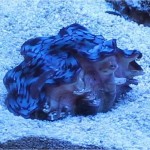
Spot Feeding Marine Clams
There are a lot of different opinions out there about the manual feeding of clams. I have had great success with weekly (or so) feedings until the clam is about 4 inches in size. I only feed monthly from 4 to 5 inches, following the below process. The below process can also be used for the spot feeding of other filter feeders and some corals.
Continue reading
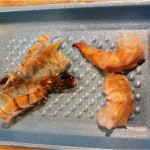
Feeding High Quality Froozen Foods
I thought I would take some time to explain how I prepare the raw foods that I feed to my carnivorous / predator fish and my anemones. This results in a higher quality food for less cost than purchased frozen fish foods.
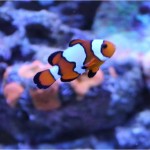
Good Starter Fish and Clean-up Crew Options
So, now after deciding to set-up your first marine aquarium and having your patients tested to the limit waiting for your tank to become cycled, you are now ready to add your first inhabitants.
Wither you decide to start off by adding your first fish or two, or start by adding your clean-up crew (CUC), can really depend a lot on your personal preferences and potentially any algae you would need to start controlling.
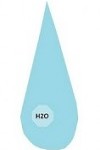
Mixing Saltwater
Mixing saltwater
Perhaps the most vital part of the marine aquarium is properly mixing salt water.
The reefs of the world are the most stable environments on Earth, despite human activity and pollution tipping that balance in the reefs of the Caribbean Sea and the east coast of Florida. The natural reef water possesses a set ratio of salts, minerals and trace elements. Temperatures vary little, and in most reefs, not at all.
Several different manufacturers product synthetic salts that posses the proper ratio of minerals and trace elements, but there are some brands that are superior to others in that respect. Seek out impartial reviews to give you an idea which salt mix to buy.
Natural Sea Water (NSW) contains 11 major elements and a handful of trace elements. To simulate that in our marine tanks one must make every effort to be as close to the natural world as possible.